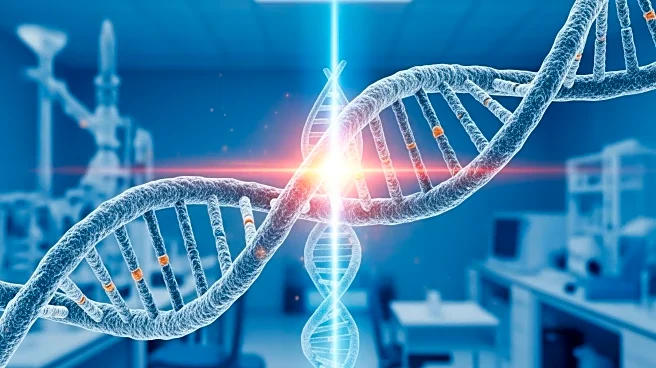What's Happening?
Researchers have introduced nano-org, an open-access database designed to standardize the storage, comparison, and analysis of single-molecule localization microscopy (SMLM) data. This development aims to improve the study of protein organization at the nanoscale. Super-resolution microscopy techniques like SMLM have revolutionized cellular visualization by surpassing the diffraction limits of traditional light microscopy, allowing for nanometer-scale resolution. Despite the detailed datasets generated, the lack of standardization has hindered large-scale comparisons. Nano-org addresses these challenges by providing a web-based platform that allows users to upload datasets in various formats, such as CSV or HDF5, and automatically performs quality assessments. The platform includes curated metadata to ensure reproducibility and context, and it enables statistical comparisons of protein distributions across datasets.
Why It's Important?
The introduction of nano-org is significant for the field of nano-omics, as it facilitates standardized data sharing and accelerates discoveries in spatial nano-omics. By enabling reproducible, cross-experimental analysis of nanoscale structures, the platform supports advancements in understanding cell signaling and disease mechanisms. Researchers can now compare nanoscale organization patterns, such as immune receptor proteins, and examine the effects of drugs on spatial organization. This capability is crucial for identifying conditions that produce comparable protein architectures, which can lead to breakthroughs in personalized medicine and pharmaceuticals. The integration with high-performance computing resources ensures efficiency and scalability, making nano-org a vital tool for the scientific community.
What's Next?
As super-resolution microscopy continues to evolve, nano-org is expected to play a pivotal role in standardizing data sharing and enhancing the analysis of nanoscale structures. Researchers will likely explore further applications of the platform in various fields, including cancer treatment and environmental science. The ability to statistically compare protein distributions and identify biological variations will drive new research initiatives and collaborations. Additionally, the platform's scalability and integration with high-performance computing resources will support larger datasets and more complex analyses, potentially leading to new insights into cellular processes and disease mechanisms.
Beyond the Headlines
The development of nano-org highlights the growing importance of data standardization and sharing in scientific research. By providing a robust platform for analyzing nanoscale structures, nano-org addresses ethical and practical challenges related to data reproducibility and transparency. The platform's emphasis on metadata normalization reinforces the need for comprehensive data documentation, which is essential for accurate scientific conclusions. As researchers continue to leverage nano-org, the platform may inspire similar initiatives in other fields, promoting a culture of open-access data and collaborative research.










